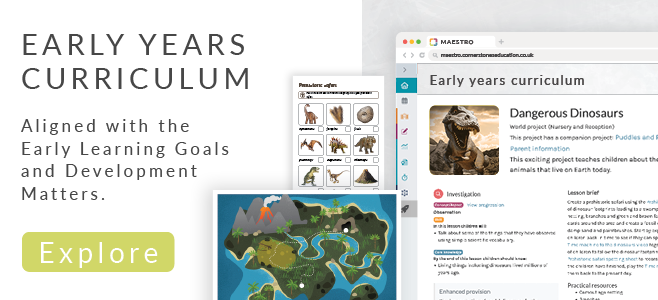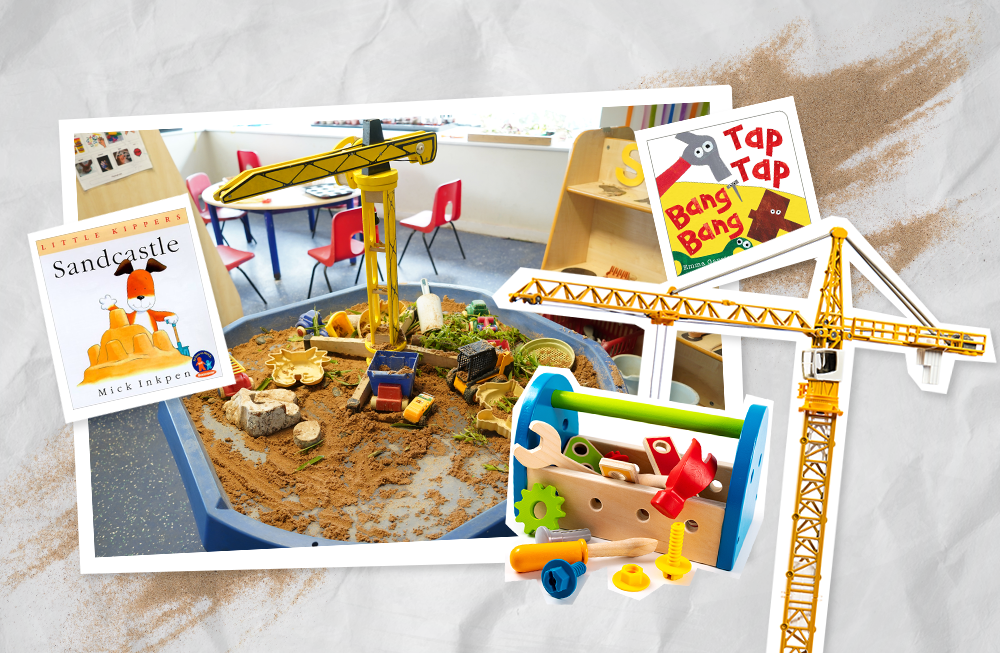One of the most searched for early years questions on Google is, ‘What’s the difference between continuous and enhanced provision?’ So, what are the differences and do early years’ settings need to provide both?
Continuous provision
Most early years practitioners recognise continuous provision as the resources they offer children as part of an enabling environment, or resources that are safe for children to explore independently. In fact, continuous provision is both these things, and it is important to remember that it is not just provision that is continually accessible but a selection of resources that continue the children’s learning in the absence of an adult.
Enhanced provision
The resources that you add to your continuous provision to further ‘enhance’ the children’s learning or interests are what practitioners call ‘enhanced provision’. For example, if you’re doing a project about animals, and children show an interest in what animals eat, you might add instructions for feeding animals or labelled bowls, tins and bags of animal feed to your reading area for children to explore.
How to prepare for continuous provision and enhanced provision
Unless your school requires it, you shouldn’t need to plan for continuous provision – it is often the same every week. However, it is useful to provide a list of resources in each area and use it for checking stock on a daily basis. When planning for your enhanced provision, it’s important to think about the topic you are doing and the children’s developing interests.
The ‘enhanced’ materials should also give children the opportunity to:
- independently practise things that they have done with an adult
- explore familiar materials in new and different ways
- consolidate the skills they have experienced in adult-led activities. You will need to plan your enhanced provision every week. It should naturally evolve alongside the children’s developing interests.
Linking your enhanced provision to your focused group work also helps you to see how children apply their learning to other contexts and work independently.
Be realistic, of course; there will be times when what you plan won’t translate into practice. But that’s okay because any interaction that the children have with quality resources will be worthwhile and can provide you with opportunities to make observations about what the children can do and are interested in.
When planning your enhanced provision, a good question to ask is, ‘Will the children do this when I’m not there?’ If the answer is probably not, you might want to think again. However, being too safe may restrict the children’s imagination and potentially shut down moments of creativity and serendipity.
Enhanced provision in the Cornerstones Curriculum
At Cornerstones, our EYFS projects offer two approaches to enhanced provision.
Find children’s interests at the start
Our first approach is to find children’s interests at the start of a project. The ‘Engage’ stage of our projects provides context for learning and offers activities and enhancements for the provision that will help practitioners learn about children’s interests and discover what their starting points are for further learning.
We hope that from these starting points, practitioners can plan activities that meet the needs and interests of the children.
Linked enhanced provision
Our second approach to enhanced provision is to link it to each adult-led activity. This helps practitioners to observe how effectively children can extend and apply learning independently or in another context.
We also provide further suggestions for enhancing the provision. These are organised into areas of continuous provision such as the creative area, mathematics, construction and small world, sand and water, investigation and role-play. Maestro also offers the tools to search for activities to develop specific gaps in development; for example, if you have identified fine motor control as a gap in development, you will be able to search for activities that link to that area. All our enhanced provision matches EYFS typical behaviours.
The adult’s role in continuous and enhanced provision
The benefits of creating a more effective learning environment are vast. In fact, researchers claim that 85% of children’s learning comes from interaction with a high-quality learning environment. However, the adult’s role is equally important in both types of provision. Questioning, observing and reflecting on children’s learning is all part of what you should do. All of these things will naturally lead back into your planning cycle. Consider what went well and what you would do differently if you were to offer the activity again, always with the intention of moving the children forward on their learning journey.



